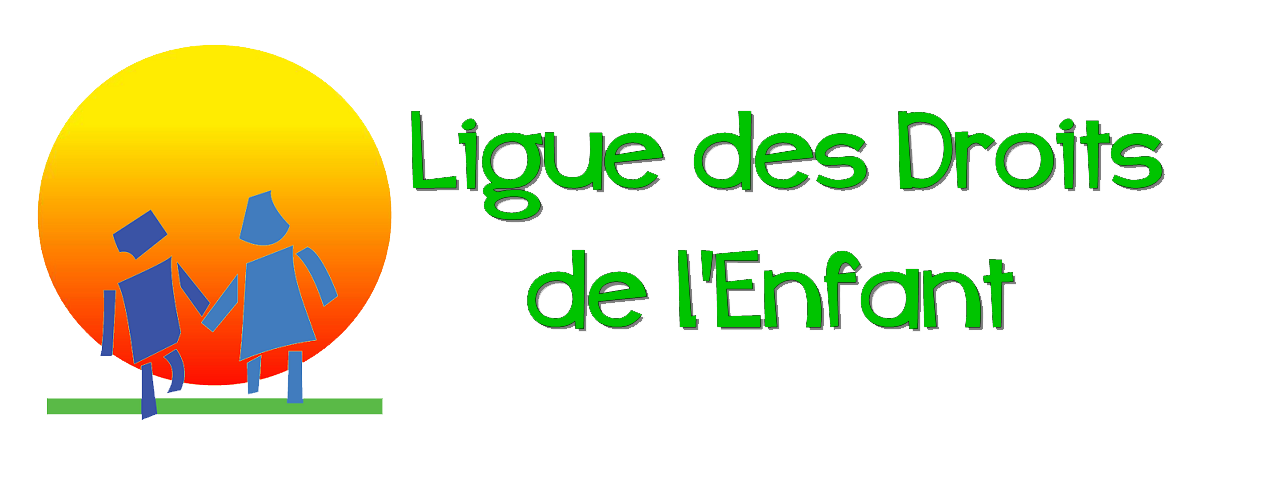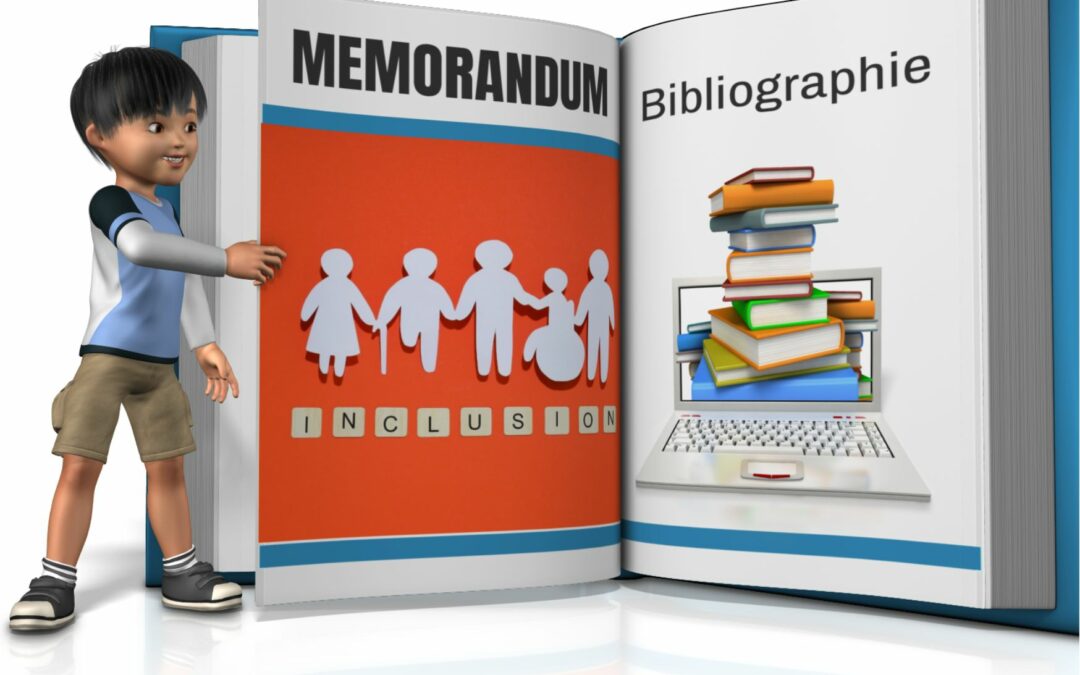Bharnagar, N., Das, A. (2014). Attitudes of secondaty school teachers towards inclusive education in New Delhi, India. Journal of Research in Special Educational Needs. 14 (4), 255-263
Bissonnette, S., Richard, M., Gauthier, C., Bouchard, C. (2010). Quelles sont les strategies d’enseignement efficaces favorisant les apprentissages fondamentaux auprès des élèves en difficulté de niveau élémentaire ? Résultats d’une méga-analyse. Revue de recherche appliquée sur l’apprentissage, 3(1), 1-35
Bronfenbrenner, U. (1979). The ecology of human developpement. Cambridge, MA : Harvard University Press.
Buckley, Bird, Sacks & Archer (2020) : « A comparison of mainstreaming and special education for teenagers with down syndrome : implications for parents and teachers. » Down Syndrome News and Update 2(2), pp. 46-54
Cole & Meyer (1991) : « Social integration and severe disabilities: A longitudinal analysis of child outcomes. » The Journal of Special Education 25(3), pp 340-351
Cook, B.G., Schirmer, B.R. (2003). What Is Special About Special Education ? Overview And Analysis. The Journal of Special Education, 37(3), 200-205
Dessemontet, Bless & Morin (2011) : « Effects on inclusion on the academic and adaptive behaviour of children with intellectual disablilities. » Journal of Intellectual Disability Research, pp 1-9
Forness S.R. (2001). Special Education and Related Services : What Have We Learned From Meta-Anlysis? University of California, Los Angeles Neuropsychiaytic Hospital Exceptionality, Lawrence Erlbaum Associates, Inc., 9(4), 185-197
Freeman & Alkin (2000) : « Academic and social attainments of children with mental retardation in general education and special education settings. » Remedial and Special Education 21(1), pp 3-18
Fullan, M.(2011). Change leader :Learning to do what matters most. Jossey-Bass : Sans Francisco (CA)
Harnett, J., Weed, R., McCoy, A., Theiss, D. et Nickens, N. (2013). Co-Teaching: A New Partnership During Student Teaching. SRATE Journal, 23 (1), 1-12
Hattie, J. (2009). VIsible Learning : A synthesis of over 800 meta-analyses relating to achievement. Routledge : Milton Park (UK)
Kozleski, E.B. et Jackson, L. (1993). Taylor’s story : Full inclusion in her neightborhood Elementary School. Exceptionality, 4(3), 153-175.
Legendre, R., (2005). Dictionnaire actuel de l’éducation. (3e éd.). Montréal : Guérin
Leithwood, K., Day, C., Sammons, P., Harris, A., Hopkins,D. (2006). Succesful school leadership :What it is and how it influences student learning. Research Report 800. Department for Education : London (UK)
McFarlane, K., Wolfson, L.M. (2013). Teacher attitudes and behavior toward the inclusion of children with social, emotional and behavior difficulties in mainstream schools: an application of the theory of planned behavior. Teaching and Teacher Education, 29, 46-52.
Migeot-Alvarado, J. (2000). La relation école-famille “peut mieux faire”. Editions socials françaises : Issy-les-Moulineaux.
Mitchell, D. (2008). What really Works in Special and Inclusive Education : Using evidence-based teaching strategies. Routledge : New York (NY)
Peck, S. (1993). La route de l’espoir : Pacifisme et communauté. Flammarion : Paris.
Peetsma, Vergeer, Roeleveld & Karsten (2001) : « Inclusion in education: Comparing pupils# development in special and regular education. » Educational review 52(2), pp 125-135
Przesmycki, H. (2004). La pédagogie différenciée. Hachette Education : Paris.
Rea, McLaughlin & Walter-Thomas (2002) « Outcomes for students with learning disabilities in inclusive and pullout programs » Exceptional Child 68(2) pp 203-222
Magnussen (2004) « Special education – does it help? A study of special education in Norwegian upper secondary schools » European Journal of Special Needs Education 19(1) pp 33-48
Rousseau, N. et Prud’Homme, L. (2010). C’est mon école à moi aussi… Caractéristiques essentielles de l’école inclusive. Dans La pédagogie de l’inclusion scolaire : pistes d’action pour apprendre tous ensemble (p. 9-46). Québec : Presses de l’Université du Québec.
Sharman U., Forlin, C., Loreman, T. (2007). What concerns pre-service teachers abour inclusive education : An international viewpoint ? Journal of Educational Policy, 4, 95-114.
Slavin, R.E., Lake, C. (2008). Effective programs in elementary mathematics: A best-evidence synthesis. Review of Educational Research, 78(3), 427-515
Slavin, R.E., Lake, C., Davis, S., Madden, N. (2010). Effective programs for struggling readers: A best evidence synthesis. Educational Research Review, 6(1), 1-26
Tomlinson, C. (2014). The Differentiated Classroom : Responding to the needs of all learners. ASCD : Alexandria (VI), cité par Tremblay (2020). Ibid
Torgensen, J.K. (2000). Individual differences in response to early intervention in reading : The lingering problem of treatment resisters. Learning Disabilities Research & Practice, 15, 55-64.
Tremblay, P. (2012a). Inclusion scolaire : dispositifs et pratiques pédagogiques. De Boeck : Bruxelles
Tremblay P. (2012b). L’évaluation de la qualité de dispositifs scolaires : développement d’une approche multidimensionnelle et bidirectionnelle. Mesure et évaluation en éducation. 35(2), 39-68.
Tremblay, P. (2020), Ecole inclusive, Conditions et applications, Academia, L’Harmattan.
Tremblay, P., Belley, S. (2018). Les plans d’intervention au Canada : analyse comparée des fonctions. Comparative and International Education / Education Comparée et Internationale. 47(1), 1-17.
Vienneau, R. (2002). Pédagogie de l’inclusion : fondements, définitions, défis et perspectives, Education et francophonie, 30(2), 257-288.


